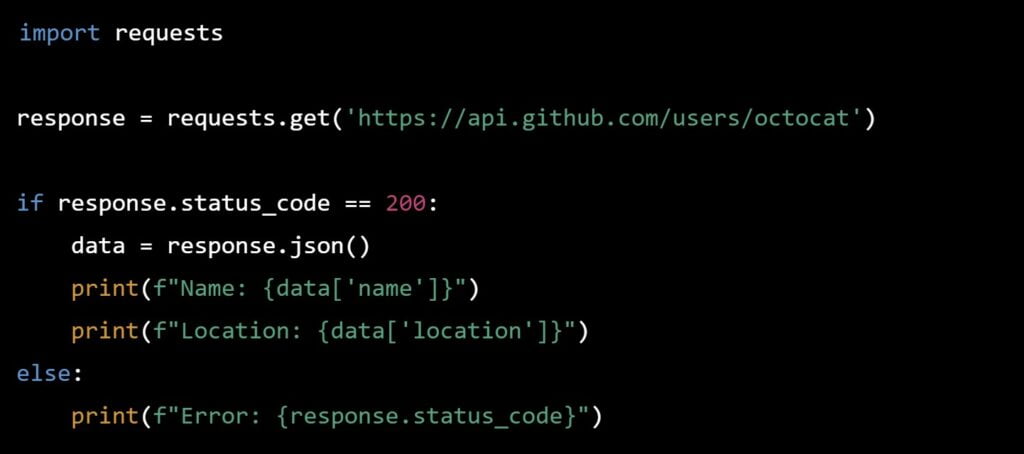Application Programming Interfaces
Table of Contents
The magic of API Integration.
The API has become an essential part of modern software development. An API is a set of protocols, routines, and tools that enable software applications to communicate with each other, exchange data, and perform various functions. In simpler terms, it’s a messenger that takes requests from one software application and sends them to another. But what exactly is an API, and how does it work?
In essence, an API is like a waiter in a restaurant. Just as the waiter takes your order and conveys it to the kitchen, an API takes requests from one application and sends them to another. The difference is that while a waiter follows a predefined set of rules to interact with the kitchen, APIs follow a set of rules called protocols. These protocols dictate how applications should communicate with each other, what data formats they should use, and how to handle errors.

Significant Advantages
One of the most significant advantages of APIs is that they enable developers to create new applications by building on top of existing software. For example, if you wanted to create a weather application, you could use an API to access real-time data from a weather services provider like OpenWeatherMap or AccuWeather. You don’t need to build the entire weather data infrastructure from scratch; instead, you can leverage the existing data and build your application around it.
Communication of Software
An API is also critical for enabling communication between different software components within an application. In a typical web application, there are multiple components such as a front-end user interface, a back-end server, and a database. These components need to communicate with each other to provide a seamless experience for the end user. APIs allow these components to exchange data and perform functions without having to understand the underlying implementation details.
Clear Benefits
- APIs enable communication between different software components within an application.
- APIs allow developers to create new applications by building on top of existing software.
- APIs enable software applications to communicate with each other, exchange data and perform various functions.
- APIs can be accessed through different methods
How do APIs work under the hood?
To understand this, let’s take a look at the typical API workflow:
- The client sends a request to the API endpoint.
- The API endpoint receives the request and authenticates the client’s credentials.
- The API endpoint processes the request, which may involve retrieving data from a database or performing a computation.
- The API endpoint constructs a response and sends it back to the client in a predefined format, such as JSON or XML.
It’s worth noting that APIs can be accessed through different methods, such as HTTP requests, web sockets, or even messaging queues. The choice of access method depends on the specific use case and the requirements of the application.
In addition to enabling communication between applications, APIs also play a crucial role in driving business growth. APIs can be monetized by charging fees for access or by offering premium features to paying customers. APIs can also be used to create partnerships between companies, allowing them to share data and functionality in mutually beneficial ways.
APIs are like magic glue that connects applications and makes them work together seamlessly.
Dion Hinchcliffe. Tweet
API Management
As the use of APIs continues to grow, so does the importance of API management. API management refers to the process of monitoring, securing, and optimizing APIs. API management solutions provide tools for monitoring API usage, controlling access, and enforcing policies. They also enable organizations to track and analyze API performance metrics, such as response time and error rate.

Management Requirements
Managing an API involves a range of tasks and responsibilities, including designing, developing, deploying, securing, testing, monitoring, and optimizing the API. Here are some key aspects of API management:
- API Design: Designing an API is a crucial first step in API management. A well-designed API should be intuitive, consistent, and flexible, with clearly defined endpoints, methods, and data formats. It should also be scalable, extensible, and easy to maintain over time.
- API Development: Once the API design is in place, it needs to be developed and implemented. This involves writing code, creating documentation, and setting up testing and staging environments. Developers need to work closely with other teams, such as QA and DevOps, to ensure that the API meets quality standards and is compatible with the target systems and platforms.
- API Deployment: After the API is developed, it needs to be deployed to a production environment. This involves setting up servers, configuring load balancers, and configuring security settings. It also involves setting up monitoring and logging tools to track usage, errors, and performance metrics.
- API Security: Security is a critical aspect of API management. APIs need to be protected against unauthorized access, hacking, and data breaches. This involves implementing security protocols, such as OAuth2, JWT, and SSL/TLS, and setting up access controls, such as rate limiting and authentication.
- API Testing: Testing is an essential aspect of API management, as it helps to ensure that the API is working as expected and is meeting the user’s needs. Testing can include functional testing, load testing, and security testing, as well as performance testing and scalability testing.
- API Monitoring: Monitoring is crucial for keeping track of how the API is performing in real-time, identifying errors, and responding to issues quickly. This involves setting up monitoring tools, such as API gateways, analytics platforms, and error tracking software, to track usage, performance, and errors.
- API Optimization: Optimizing the API is an ongoing process that involves identifying areas for improvement and implementing changes to enhance the user experience and improve performance. This can involve tweaking API response times, streamlining workflows, adding new features, or optimizing code to reduce latency.
Sample code to make a GET request to the GitHub API:

Bottom Line
In summary, APIs are the backbone of modern software development, enabling communication between applications, facilitating component interaction within applications, and driving business growth. As the number of APIs continues to grow, it’s essential for developers to have a solid understanding of how APIs work and how to manage them effectively.
Managing an API involves a range of tasks and responsibilities, including design, development, deployment, security, testing, monitoring, and optimization. To manage an API effectively, it’s essential to have a solid understanding of all these aspects, as well as the tools and technologies used to support API management. It’s also important to work closely with other teams, such as QA, DevOps, and security, to ensure that the API meets the highest quality standards and is compatible with the target systems and platforms.
